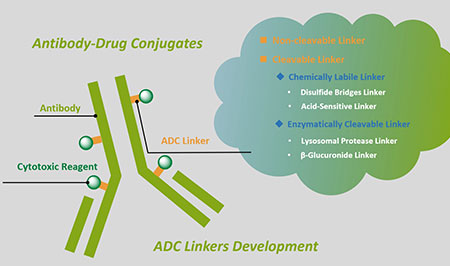1.FLAG Regimen with or without Idarubicin in Children with Relapsed/Refractory Acute Leukemia: Experience from a Turkish Pediatric Hematology Center.
Yılmaz Bengoa Ş, Ataseven E, Kızmazoğlu D, Demir Yenigürbüz F, Erdem M, Ören H. Turk J Haematol. 2016 Apr 18. doi: 10.4274/Tjh.2015.0411. [Epub ahead of print]
in
English, TurkishGİRİŞ ve AMAÇ: Relaps/refrakter akut lösemili çocuklarda daha yüksek sağkalımı sağlayabilecek en uygun tedavi yaklaşımı halen bilinmemektedir. Gelişmekte olan ülkelerde bu hasta grubunda etkin olduğu iyi bilinen ve yakın zamanda geliştirilmiş bazı ilaçlara ulaşımda güçlük yaşanmaktadır. Biz relaps/refrakter akut lenfoblastik lösemili (ALL) ve akut miyeloid lösemili (AML) çocuklarda idarubisin (IDA) eklenmiş veya eklenmemiş, fludarabin, yüksek doz sitarabin ve granülosit koloni stimüle edici faktör (FLAG tedavisi) kombinasyonunun etkinliğini değerlendirdik. YÖNTEM ve GEREÇLER: Çalışmaya Eylül 2007 ve Mayıs 2015 arasında merkezimizde izlenen, IDA eklenmiş veya eklenmemiş FLAG tedavisi verilen, 18 relaps/refrakter akut lösemili çocuk dahil edilmiştir. Birincil sonlanım noktası kemoterapi sonrası alınan kemik iliği örneğinin remisyon durumu ve ikinci sonlanım noktası ise hematopoetik kök hücre nakli (HKHN) sonrası sağkalım süresi olarak belirlenmiştir.
2.Fludarabine, idarubicin, and cytarabine regimen together with TKI followed by haploidentical hematopoietic stem cell transplantation, a success for relapsed Ph+ acute lymphoblastic leukemia.
Sang W1, Wang Y1, Zhang C1, Yan D1, Niu M1, Yang C2, Liu X3, Sun C1, Zhang Z1, Loughran TP Jr4, Xu K1. Clin Case Rep. 2016 Mar 4;4(4):390-5. doi: 10.1002/ccr3.438. eCollection 2016.
In this report, a case of relapsed Ph+ ALL was remedied by reinduction, and consolidation regimen of TKI and Flu+ Ara-C+ IDA (FLAI) combination, followed by haploidentical SCT. Results suggest that FLAI together with TKI and subsequently with haploidentical SCT could be applied for relapsed Ph+ ALL.
3.Aptamer targeting of the elongation factor 1A impairs hepatocarcinoma cells viability and potentiates bortezomib and idarubicin effects.
Bruna S1, Rosella F2, Barbara D1, Gabriele B1, Gabriele P3, Mario G2, Fabrizio Z3, Gabriele G4. Int J Pharm. 2016 Apr 16. pii: S0378-5173(16)30315-5. doi: 10.1016/j.ijpharm.2016.04.031. [Epub ahead of print]
The high morbidity and mortality of hepatocellular carcinoma (HCC) is mostly due to the limited efficacy of the available therapeutic approaches. Here we explore the anti-HCC potential of an aptamer targeting the elongation factor 1A (eEF1A), a protein implicated in the promotion of HCC. As delivery methods, we have compared the effectiveness of cationic liposome and cholesterol-mediated approaches. A75 nucleotide long aptamer containing GT repetition (GT75) was tested in three HCC cell lines, HepG2, HuH7 and JHH6. When delivered by liposomes, GT75 was able to effectively reducing HCC cells viability in a dose and time dependent fashion. Particular sensitive were JHH6 where increased apoptosis with no effects on cell cycle were observed. GT75 effect was likely due to the interference with eEF1A activity as neither the mRNA nor the protein levels were significantly affected. Notably, cholesterol-mediated delivery of GT75 abrogated its efficacy due to cellular mis-localization as proven by fluorescence and confocal microscopic analysis.
4.Pentoxifylline affects idarubicin binding to DNA.
Gołuński G1, Borowik A1, Lipińska A2, Romanik M1, Derewońko N2, Woziwodzka A1, Piosik J3. Bioorg Chem. 2016 Apr;65:118-25. doi: 10.1016/j.bioorg.2016.02.005. Epub 2016 Feb 20.
Anticancer drug idarubicin - derivative of doxorubicin - is commonly used in treatment of numerous cancer types. However, in contrast to doxorubicin, its biophysical properties are not well established yet. Additionally, potential direct interactions of idarubicin with other biologically active aromatic compounds, such as pentoxifylline - representative of methylxanthines - were not studied at all. Potential formation of such hetero-aggregates may result in sequestration of the anticancer drug and, in consequence, reduction of its biological activity. This work provide description of the idarubicin biophysical properties as well as assess influence of pentoxifylline on idarubicin interactions with DNA. To achieve these goals we employed spectrophotometric methods coupled with analysis with the appropriate mathematical models as well as flow cytometry and Ames test. Obtained results show influence of pentoxifylline on idarubicin binding to DNA and are well in agreement with the data previously published for other aromatic ligands.







